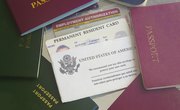College life is filled with enough stress; the last thing you want to worry about is the inability to pay or get financial help because of your part-time status. No need to fret – there are college, state and federal financial aid options still available for those who qualify but cannot attend college full time.
Federal Perkins Loans
A Federal Perkins Loan is an option for part-time undergraduate, graduate or professional students. Not all colleges participate in this loan program, so you must verify this option with your chosen college. Funds are limited, so apply as early as you can. Undergraduates can borrow $5,500 per year, and graduate or professional students have an $8,000 per year limit.
Federal Pell Grants
Part-time undergraduate students can apply for a Federal Pell Grant. You must demonstrate that you are of financial need by providing information about your income, assets, family size and the cost of your education. The Pell Grant award amounts range from $659 to $5,500 per year. The amount you actually receive from a Federal Pell Grant will depend on your financial need, your cost of attendance, how many credits you’re taking and what your attendance plans are for the full academic year. As of July 1, 2012, you can only receive a Pell Grant for 12 semesters or less.
Federal Stafford Loans
If you’re enrolled for at least six credits per semester, you may want to consider a federal Stafford loan. The U.S. Department of Education funds Stafford loans. If you demonstrate financial need, you can get a loan that doesn’t accrue interest while you are attending school. If you don’t qualify for other financial aid programs because you don’t find the financial needs requirement, you can get an unsubsidized Stafford loan. These do not have the interest grace period and start to accrue as soon as the loan repayment period begins.
State and College Financial Aid
Depending on your state, you may be able to qualify for state government financial aid. Some colleges and universities also offer their own financial aid loans, grants and scholarships. Since each state and college has its own programs and qualifications, you’ll have to check with your college to see what is available beside the federal financial aid programs.
Work Study
Federal Work-Study programs connect undergraduate students with various local jobs, such as tutoring high school kids or working at the campus bookstore. The jobs that are available through FWS must pay at least the current minimum wage or higher, and these wages are used to pay back the student’s FWS grant. These programs are like a payday advance for your tuition that you have to pay back through labor.
Financial Aid Requirements
Each financial aid program has its own set of guidelines in order to qualify, but there are some general rules to be considered. First of all, you need to demonstrate financial need to be able to qualify for financial aid, except when you are applying for unsubsidized Stafford loans. You must have a high school diploma or GED certificate, be accepted to an eligible program, have a Social Security number, maintain satisfactory academic progress, and be a U.S. citizen, U.S. National or Green Card holder. If you get a drug conviction on your record while you were receiving federal student aid, you may have a hard time getting additional funds. Fill out a Free Application for Federal Student Aid to see what you quality for.
Financial Aid Status
Once you are approved for financial aid as a part-time student, you must make satisfactory academic progress, complete the minimum amount of credits required for your financial aid program and finish your degree or certificate in an acceptable amount of time to continue to get your financial aid. If you get poor grades, drop out, withdraw from classes, change majors or take a long time to finish your degree, your financial aid status may be affected.











